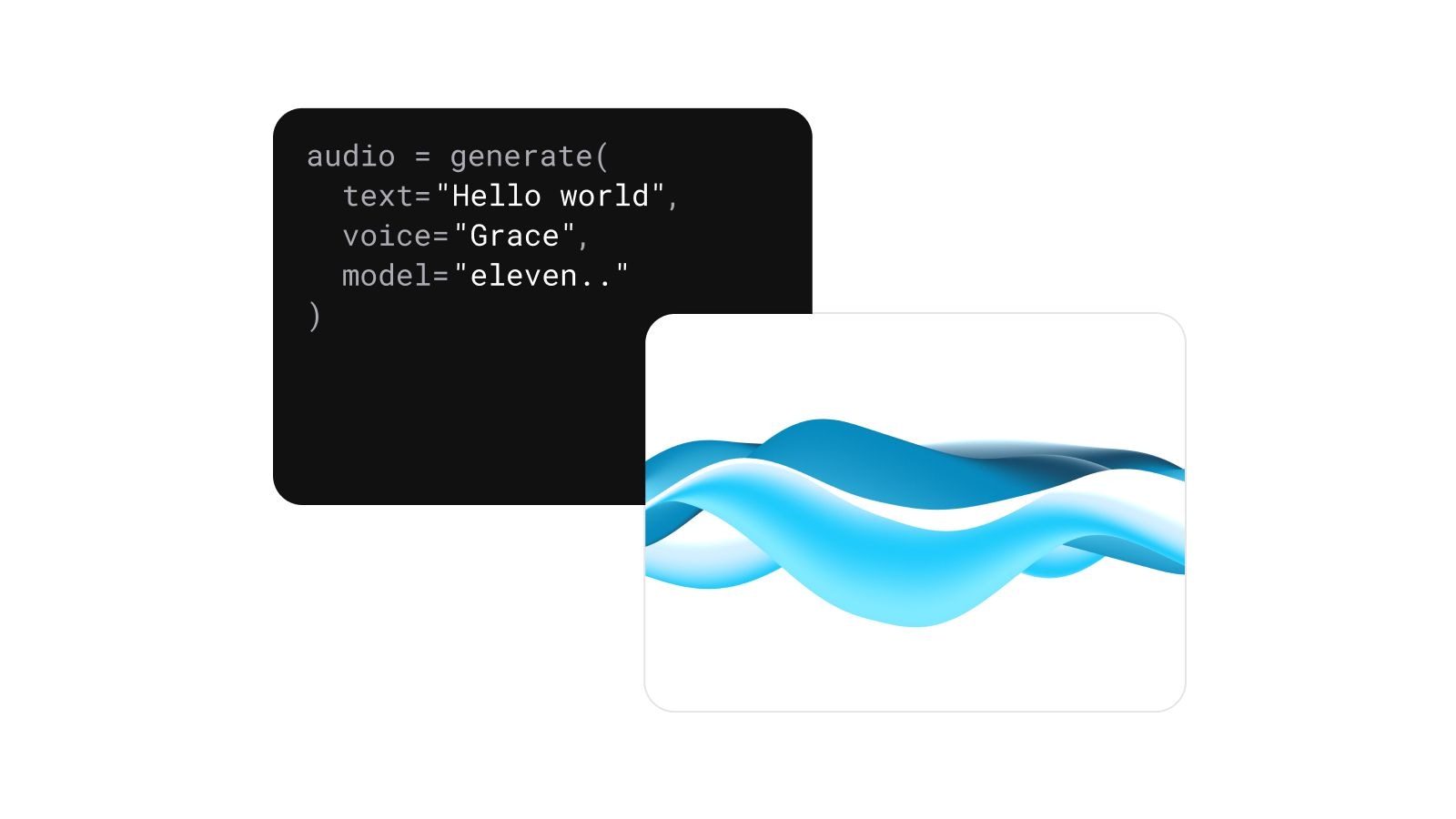
Integrera enkelt vårt Text to Speech-API med kort fördröjning och få tydliga, högkvalitativa röster till dina applikationer med minimal kodning
Upptäck allt vår plattform erbjuder

Vår röst-AI reagerar på emotionella signaler i texten och anpassar sitt framförande för att passa både det omedelbara innehållet och den bredare kontexten. Detta gör att våra AI-röster kan uppnå hög emotionell räckvidd och undvika logiska fel när ditt innehåll läses upp.

Hitta den perfekta rösten för ditt innehåll. Välj bland tusentals röster i Voice Library eller använd Voice Design för att skapa nya AI-röster från grunden. Justera ålder, accent och röstinställningar för att matcha dina produktionsbehov
Vår ElevenReader-app läser upp artiklar, PDF:er, ePubs, nyhetsbrev eller annat textinnehåll. Välj enkelt en röst från vårt omfattande bibliotek, ladda upp ditt innehåll och lyssna från din telefon när det läses upp av en av våra berättare.
Välj en röst, ladda upp ditt manus och skapa högkvalitativa voiceovers för sociala medier, reklam, filmer och mer. Justera tidpunkter, tilldela flera talare och lägg till ljudeffekter i Voiceover Studio
Alla våra AI-röster kan tala 70+ språk. Använd våra flerspråkiga text to speech-modeller för att nå internationella publiker, överbrygga språkbarriärer och öppna möjligheter i nya områden












































































Vi går ett steg längre och erbjuder specifika dialekter för många av våra språk så att du kan skapa den perfekta voice-over och fånga språkens rika nyanser.
































Vår mest avancerade, uttrycksfulla modell med ljudtaggar för exakt emotionell kontroll. Bäst för berättande, spel och medieproduktion på 70+ språk.
Vår mest naturtrogna, emotionellt rika text to speech-modell som stöder 29 språk. Bäst för voice-overs, ljudböcker, efterproduktion och innehållsskapande.
Vår engelskspråkiga, låglatens TTS-modell. Bäst för utvecklare, enskilda språkanvändningar där hastighet är viktigt. Prestanda är i nivå med Turbo v2.5.
Vår högkvalitativa, låglatens TTS-modell på 32 språk. Bäst för utvecklare där hastighet är viktigt och du behöver icke-engelska språk.
Använd AI text to speech för att skapa naturliga, människoliknande röster för chatbots och virtuella assistenter, vilket förbättrar användarinteraktionen med realistiska svar.
Skapa voice-overs för videospelskaraktärer med text to speech API, med kontextmedvetna och emotionellt korrekta röster som matchar spelets scenarier.
Konvertera skriven text till naturligt ljudande AI-röster för ljudböcker, vilket gör att du snabbt kan producera innehåll på flera språk.
Producera högkvalitativa voice-overs för videor, TV-program och animationer med AI text to voice, vilket eliminerar behovet av mänskliga röstskådespelare och snabbar upp produktionen.
Använd AI text to speech för att skapa podcaster med konsekvent, professionellt ljudande berättarröst, vilket minskar tiden för manuell inspelning.
Integrera text to speech i webbplatser och appar för att erbjuda ljudversioner av innehåll, vilket hjälper användare med synnedsättningar eller lässvårigheter att lättare få tillgång till information.

Integrera enkelt vårt Text to Speech-API med kort fördröjning och få tydliga, högkvalitativa röster till dina applikationer med minimal kodning

Automatisera voiceover till videor, uppläsning av reklam, poddar och mycket mer med din egen röst
FÖRETAG

✓ SLA:er på företagsnivå
✓ Dedikerad support
✓ Prioriterad användning
✓ API-åtkomst
✓ Obegränsat antal användare
✓ Volymrabatter

Upptäck en stor samling högkvalitativa röster skräddarsydda för kreatörer. Oavsett om du producerar ljudböcker, videor eller interaktivt innehåll, hitta den perfekta rösten för att förverkliga din vision.
Drivs av ElevenLabs Agenter